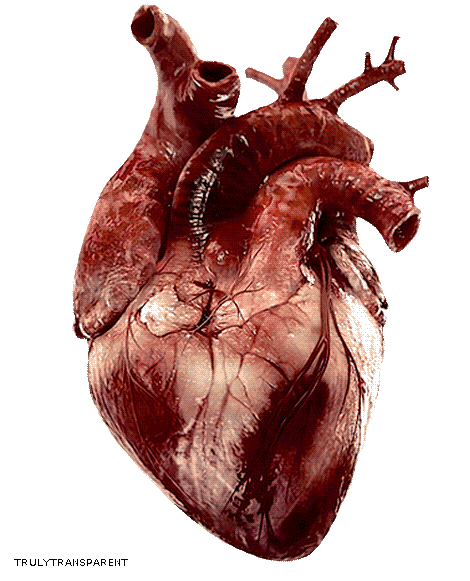What is Diabetes?
Diabetes can strike anyone, from any walk of life.
And it does – in numbers that are dramatically increasing. In the last decade, the cases of people living with diabetes jumped almost 50 percent – to more than 30 million Americans. Worldwide, it afflicts more than 422 million people.
Diabets is a leading cause of blindness, kidney failure, amputations, heart failure and stroke.
Living with diabetes places an enormous emotional, physical and financial burden on the entire family. Annually, diabetes costs the American public more than $245 billion.
Just what is diabetes?
To answer that, you first need to understand the role of insulin in your body. When you eat, your body turns food into sugars, or glucose. At that point, your pancreas is supposed to release insulin. Insulin serves as a “key” to open your cells, to allow the glucose to enter -- and allow you to use the glucose for energy.
Several major things can go wrong – causing the onset of diabetes. Type 1 and type 2 diabetes are the most common forms of the disease, but there are also other kinds, such as gestational diabetes, which occurs during pregnancy, as well as other forms.
Do you want to learn more about the basics of diabetes? Read our brochure: "What is Diabetes?" in English or "¿Que es La Diabetes?" in Spanish.
What is Type 1 Diabetes?
The more severe form of diabetes is type 1, or insulin-dependent diabetes. It’s sometimes called “juvenile” diabetes, because type 1 diabetes usually develops in children and teenagers, though it can develop at any age.

Immune System Attacks
With type 1 diabetes, the body’s immune system attacks part of its own pancreas. Scientists are not sure why. But the immune system mistakenly sees the insulin-producing cells in the pancreas as foreign, and destroys them. This attack is known as "autoimmune" disease.
These cells – called “islets” (pronounced EYE-lets) – are the ones that sense glucose in the blood and, in response, produce the necessary amount of insulin to normalize blood sugars.
Insulin serves as a “key” to open your cells, to allow the glucose to enter -- and allow you to use the glucose for energy. Without insulin, there is no “key.” So, the sugar stays -- and builds up-- in the blood. The result: the body’s cells starve from the lack of glucose. And, if left untreated, the high level of “blood sugar” can damage eyes, kidneys, nerves, and the heart, and can also lead to coma and death.
Insulin Therapy
So, a person with type 1 treats the disease by taking insulin injections. This outside source of insulin now serves as the “key” -- bringing glucose to the body’s cells.
The challenge with this treatment is that it’s often not possible to know precisely how much insulin to take. The amount is based on many factors, including:
•Food
•Exercise
•Stress
•Emotions and general health
Balancing Act
These factors fluctuate greatly throughout every day. So, deciding on what dose of insulin to take is a complicated balancing act.
If you take too much, then your body burns too much glucose -- and your blood sugar can drop to a dangerously low level. This is a condition called hypoglycemia, which, if untreated, can be potentially life-threatening.
If you take too little insulin, your body can again be starved of the energy it needs, and your blood sugar can rise to a dangerously high level -- a condition called hyperglycemia. This also increases the chance of long-term complications.
SEE ALSO: LONGER LASTING ERECTION FOR MEN
What is Type 2 Diabetes?
The most common form of diabetes is called type 2, or non-insulin dependent diabetes.
This is also called “adult onset” diabetes, since it typically develops after age 35. However, a growing number of younger people are now developing type 2 diabetes.
People with type 2 are able to produce some of their own insulin. Often, it’s not enough. And sometimes, the insulin will try to serve as the “key” to open the body’s cells, to allow the glucose to enter. But the key won’t work. The cells won’t open. This is called insulin resistance.
Often, type 2 is tied to people who are overweight, with a sedentary lifestyle.
Treatment focuses on diet and exercise. If blood sugar levels are still high, oral medications are used to help the body use its own insulin more efficiently. In some cases, insulin injections are necessary.
Symptoms & Causes of Diabetes
What are the symptoms of diabetes?
Symptoms of diabetes include
- increased thirst and urination
- increased hunger
- fatigue
- blurred vision
- numbness or tingling in the feet or hands
- sores that do not heal
- unexplained weight loss
Symptoms of type 1 diabetes can start quickly, in a matter of weeks. Symptoms of type 2 diabetes often develop slowly—over the course of several years—and can be so mild that you might not even notice them. Many people with type 2 diabetes have no symptoms. Some people do not find out they have the disease until they have diabetes-related health problems, such as blurred vision or heart trouble.
What causes type 1 diabetes?
Type 1 diabetes occurs when your immune system, the body’s system for fighting infection, attacks and destroys the insulin-producing beta cells of the pancreas. Scientists think type 1 diabetes is caused by genes and environmental factors, such as viruses, that might trigger the disease. Studies such as TrialNet are working to pinpoint causes of type 1 diabetes and possible ways to prevent or slow the disease.
What causes type 2 diabetes?
SEE ALSO: SEX IS BENEFICIAL TO YOUR HEALTH
Overweight, obesity, and physical inactivity
You are more likely to develop type 2 diabetes if you are not physically active and are overweight or obese. Extra weight sometimes causes insulin resistance and is common in people with type 2 diabetes. The location of body fat also makes a difference. Extra belly fat is linked to insulin resistance, type 2 diabetes, and heart and blood vessel disease. To see if your weight puts you at risk for type 2 diabetes, check out these Body Mass Index (BMI) charts.
RECOMMENDED READING: BENEFITS OF HONEY
Insulin resistance
Type 2 diabetes usually begins with insulin resistance, a condition in which muscle, liver, and fat cells do not use insulin well. As a result, your body needs more insulin to help glucose enter cells. At first, the pancreas makes more insulin to keep up with the added demand. Over time, the pancreas can’t make enough insulin, and blood glucose levels rise.
Genes and family history
As in type 1 diabetes, certain genes may make you more likely to develop type 2 diabetes. The disease tends to run in families and occurs more often in these racial/ethnic groups:
- African Americans
- Alaska Natives
- American Indians
- Asian Americans
- Hispanics/Latinos
- Native Hawaiians
- Pacific Islanders
Genes also can increase the risk of type 2 diabetes by increasing a person’s tendency to become overweight or obese.
HOW TO REVERSE THE SITUATION
This popular plant around the world has now found its way into most homes, where people use it to treat numerous health and skin problems.
 Aloe vera is a medicinal plant that has many uses in health and beauty care.
Aloe vera is a medicinal plant that has many uses in health and beauty care.
One of the main benefits of aloe vera is its ability to regulate blood sugar levels and fight diabetes. It’s been used for centuries for this very purpose, and now scientific research is confirming its ability to do so.
FOREVER NATURE MIN: Your body can benefit from nutrients locked deep in an ancient seabed, because four percent of our body weight is comprised of these minerals. Since our bodies can’t manufacture minerals, we have to obtain them from our food or supplementation.
Forever Nature-Min® is an advanced, multi-mineral formula using new bio-available forms of minerals for maximum absorption. It provides minerals and trace minerals in a perfectly balanced ratio for maximum efficiency. Using a mineral base of natural seabed deposits, Nature-Min provides most of the key minerals found in the human body.
Minerals in the body perform three functions:
1. Some, like calcium, phosphorus and magnesium, are constituents of the bones and teeth.
2. Others are soluble salts that help to control the composition of body fluids and cells.
3. Minerals, such as iron and hemoglobin, perform other vital tasks. They work with enzymes and proteins, which are necessary for releasing and utilizing energy.
Forever Nature-Min® is an excellent way to ensure that your body is getting the minerals and trace minerals it needs to meet the demands of a healthy, balanced lifestyle.
- Contains trace minerals from natural sea bed deposit
- Perfect blend of minerals in each tablet
- Minerals play many roles in the human body, from regulating fluid balance to activating genes and hormones
With today’s busy lifestyles and the convenience of fast food, we all too often neglect eating fresh, green foods. Forever Living Products™ provides a simple solution to “convenience eating” in Forever Fields of Greens™. One glance at its ingredient list reveals a cornucopia of green foods for your body. Get the antioxidants you may be lacking. Forever Fields of Greens™ combines young barley grass, wheat grass, alfalfa and added cayenne pepper (to help maintain healthy circulation and digestion). We have also added honey to promote energy.
Fields of Greens - an excellent substitute for green vegetables for those who do not eat enough of them.helps maintain healthy circulation, helps control blood sugar level in diabetes, reduces excess body estrogen
Forever Garcinia Plus® is a revolutionary dietary supplement, containing ingredients that may aid in weight loss. The primary ingredient is a natural substance derived from the fruit of a Southern Asian tree, the Garcinia Cambogia, also known as the Malabar Tamarind. The rind of this fruit is dried and used to produce a substance that is very similar to the citric acid found in oranges and other citrus fruits.
The effects of Garcinia cambogia (GC) on blood sugar have been studied in rodents. For example, a June 2005 article in the "American Journal of Physiology: Gastrointestinal and Liver Physiology" examined the effects of HCA -- a dose 5 times higher than recommended in humans -- on absorption of glucose, or blood sugar, in rats. The authors reported that rats supplemented with HCA and fed glucose 2 hours later had slower glucose absorption and lower peak blood sugar compared to rats that did not receive HCA.
More recently, an article published in the July-September 2010 issue of the "Journal of Young Pharmacists" found that diabetic mice fed an extract of Garcinia indica rind for 4 weeks had decreased blood sugar both when fasting and after a meal. Although GC and Garcinia indica are similar, they are not identical, so these results may not be applicable to GC. More research is needed to determine if the blood sugar effects of GC in rodents are also seen in people with T2DM.
FOREVER GIN CHIA:Two ancient herbs: golden chia from the West and ginseng from the East, combine to create a modern miracle - Forever® Gin-Chia®. Let this powerful combination of herbs give your body back what your busy lifestyle takes out!
Golden Chia, or North American Sage, was used by southwest Native American Indians in the US at the turn of the century for its life-sustaining properties. Chia contains healthful polyunsaturated fatty acids, antioxidants, fiber, and protein.
Ginseng is legendary as a tonic, earning its name as the “King of Tonics.” It contains saponins, making ginseng an adaptogen (a compound that adapts its effects depending on the needs of the body). Ginseng is also a potent antioxidant.
GINSENG
This highly versatile herbal remedy has proven itself capable of reducing blood sugar levels in tests done by researchers in the former Soviet Union. The most convenient way to take it is in capsule form. This plant native to India has long served as a diabetes ” medication” in that part of the world. Scientific studies at medical schools in India have confirmed its blood sugar-lowering ability. It works for both type i and ii conditions by controlling blood sugar levels. In tests, it has enabled type ii diabetics to reduce their insulin dosages, and type ii diabetics have been to decrease or discontinue their oral medications.(Ginseng) extract good to know about it is that it can help lower your blood glucose only if it is high. It will not touch normal blood sugar levels, unlike diabetes drugs, that will drop normal blood sugar to dangerously low levels.
Forever Gin Chia:
Our Gin Chia is a blend of Ginseng and Chia herbs. Ginseng is legendary as a tonic, earning its name as the “King of Tonics”. It contains saponins, making ginseng an adaptogen (a compound that adapts its effects depending on the needs of the body). It has been found also that some energizing products like Ginseng contains substances similar to the insulin hormone.
Golden Chia, or North American Sage, was used by southwest Native American Indians, Chia was “Indians holy plant” .In addition to the above-mentioned therapeutic effects known of herbs together these two legendary herbs pack a powerful punch to help you get more energy, support blood circulation – blood flow, increase stamina and endurance and fighting free radicals.
This highly versatile herbal remedy has proven itself capable of reducing blood sugar levels in tests done by researchers in the former Soviet Union. The most convenient way to take it is in capsule form. This plant native to India has long served as a diabetes ” medication” in that part of the world. Scientific studies at medical schools in India have confirmed its blood sugar-lowering ability. It works for both type i and ii conditions by controlling blood sugar levels. In tests, it has enabled type ii diabetics to reduce their insulin dosages, and type ii diabetics have been to decrease or discontinue their oral medications.(Ginseng) extract good to know about it is that it can help lower your blood glucose only if it is high. It will not touch normal blood sugar levels, unlike diabetes drugs, that will drop normal blood sugar to dangerously low levels.
Forever Gin Chia:
Our Gin Chia is a blend of Ginseng and Chia herbs. Ginseng is legendary as a tonic, earning its name as the “King of Tonics”. It contains saponins, making ginseng an adaptogen (a compound that adapts its effects depending on the needs of the body). It has been found also that some energizing products like Ginseng contains substances similar to the insulin hormone.
Golden Chia, or North American Sage, was used by southwest Native American Indians, Chia was “Indians holy plant” .In addition to the above-mentioned therapeutic effects known of herbs together these two legendary herbs pack a powerful punch to help you get more energy, support blood circulation – blood flow, increase stamina and endurance and fighting free radicals.
CONGRATULATION, YOU ARE ON YOUR WAY TO BETTER HEALTH,CONTACT +233246475217



















![HOME THERAPY FOR PILES REMOVER [ QUICKEST METHOD]](https://blogger.googleusercontent.com/img/b/R29vZ2xl/AVvXsEgPzHft58Q_4jwriUmXF_KAoOo5N4IU8JCX6jBuUvYOOIBuEnzT6M5RmuwSVXNLorHlp4S_A0z6YGRAiBK2TfvisSpZqWI1HrfOyRf-dkqqsokISxm2uTFcWE8lf0g1yOHE0AoJlDnwSNg/w72-h72-p-k-no-nu/Picture1.png)
![EXCELLENT P-HEALTH SUPER-FOODS FOR MEN [UNDER 5-MIN]](https://blogger.googleusercontent.com/img/b/R29vZ2xl/AVvXsEgCA5UNhyphenhyphenUgdzS4cDFh2FqSsvgm0k72XnrkYjQsj49eatv7BE33hL0A5XZL3c5JKfc_4JZ_oZka3iLBtj_2D-BobtDXS7YpLRUZy3d1IA45Qeic3lj1vNpL-KM-9yIpeIAy7CGGuB0Pi4Q/w72-h72-p-k-no-nu/77B4F915-056B-4E69-A606-BD1D5B642A53.png)

0 Comments